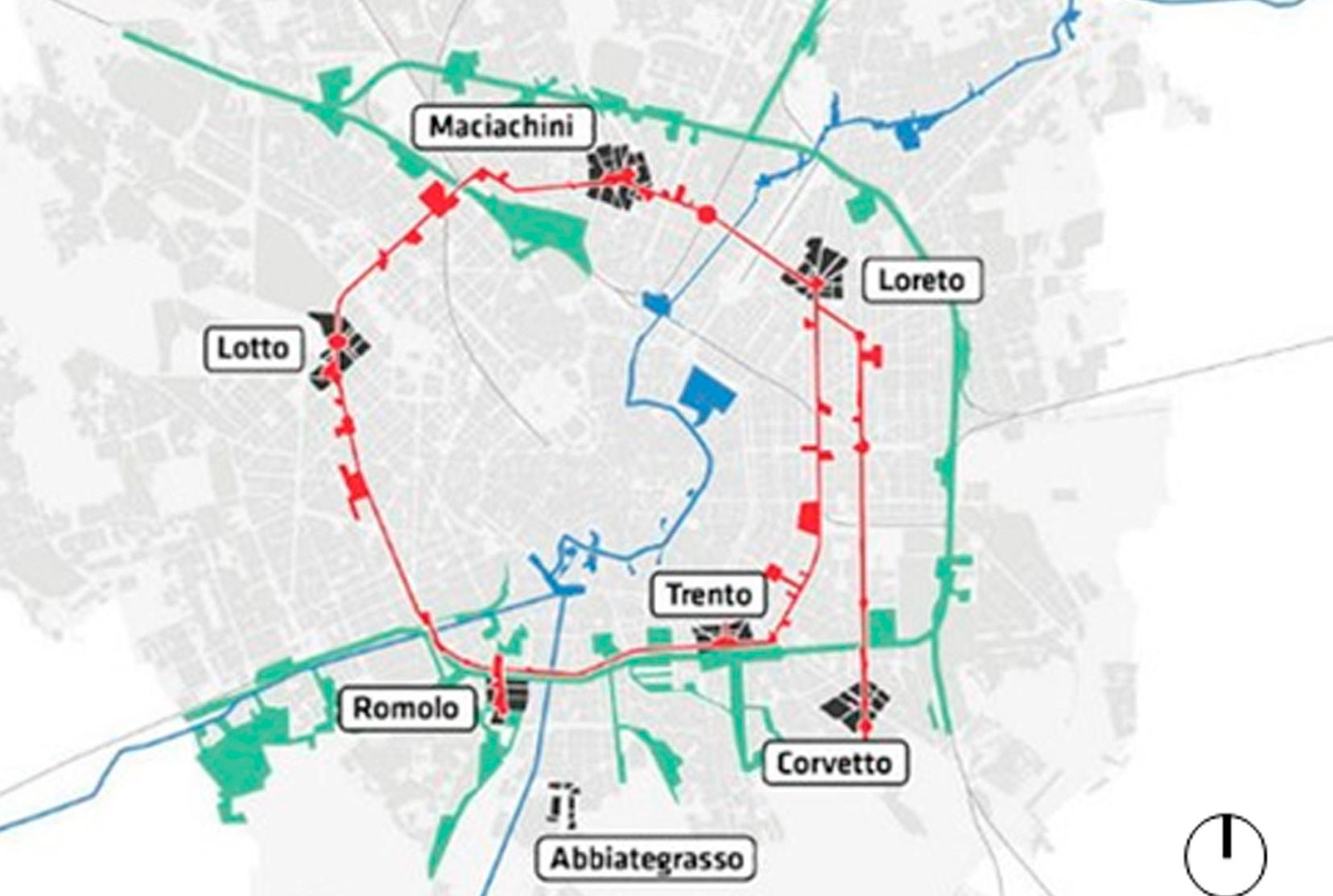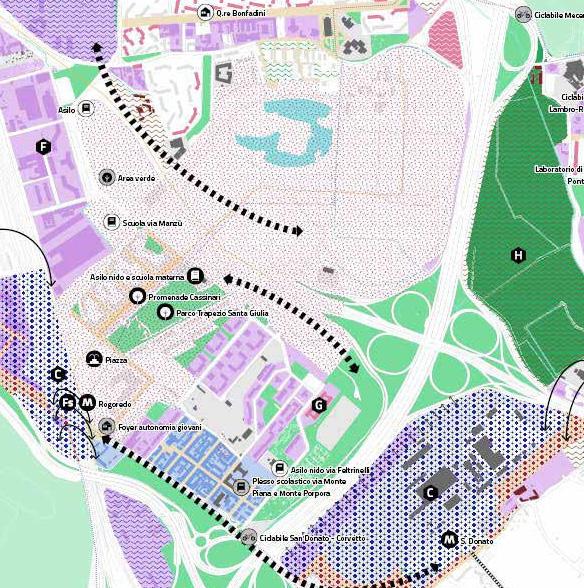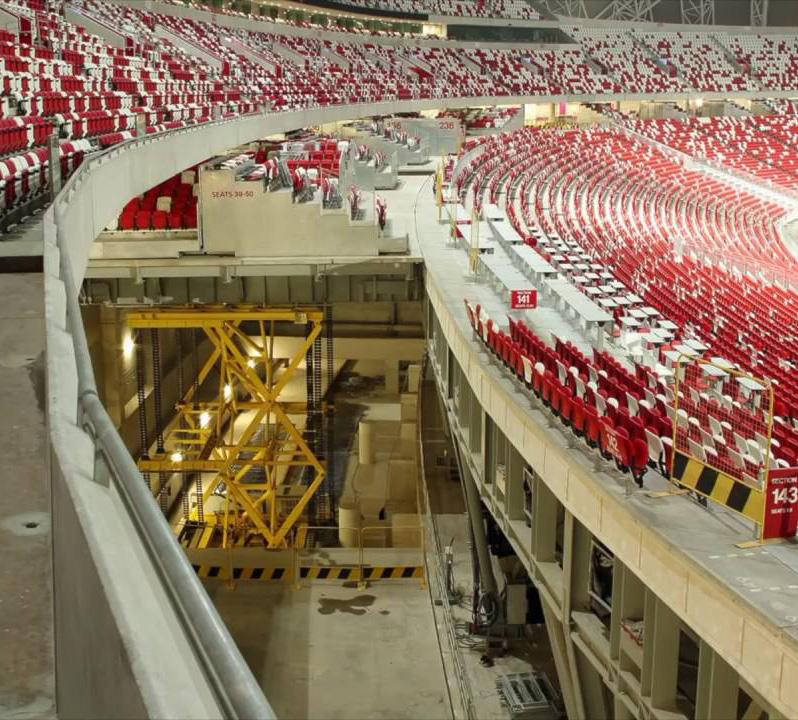
5 minute read
HISTORY OF SPORT ARENAS FROM ORIGINALITY TO MODERN ARENAS
Stadium At Olympia
As mentioned before, the first stadium to be designed was built by the Greeks, dating back to 776 B.C where it was used for the Olympic Games. Such stadium, Stadium at Olympia, was built in a U-Shape, following the track’s lines. The stadium’s racetrack was more than 200 meters long and approximately 30 meters broad. The stadium was originally designed and built so that audience could see the festivities from the slopes of Mount Cronion; nevertheless, it was gradually shifted eastward until it was finally put outside Zeus’ temple. The stadium had a capacity of 20,000 seats, and almost all of the seats were built of mud, with a few exceptions made specifically for officials. The stadium and the sanctuary were joined by a vaulted tunnel.
Advertisement

Circus Maximus
The evolution of stadiums grew and prospered specially in the Roman era, especially with the birth of circus and amphitheaters. In Rome, Italy, the Circus Maximus is a historic Roman chariotracing arena and a large entertainment facility. Located between the Aventine and Palatine hills, it is considered to be the earliest and largest stadium in ancient Rome. Built in the first century B.C in Rome, the circus was originally inspired by Greek’s U-Shaped stadiums; however, as demand and innovations grew, so did the stadiums. This allowed for the the tracks to be extended and spread over 621m in length and 118 m in width. What differentiated the circus from Greek’s stadiums was the closure of the fourth side, either by buildings or by arcades. Another difference was definitely the size and spectator’s hosting capability, as it can welcome over 150,000 spectators, compared to 20,000 from the ancient Greek’s stadiums. The spectators’ stages were erected on a natural slope, with the lower levels made of stone and the higher ones made of wood. The stands were built on three levels, with an exterior façade consisting of three stacked rows. Large arcades were installed in the lowest row, which were utilized by spectators as they entered and exited the stadium. Workshops with doors opening onto the outside were also available in the arcades. Because of its proximity to the Tiber, it was possible to be filled with river waters, allowing Circus Maximus to be used for naumachia shows.
ROMAN AMPHITHEATERS | THE COLOSSEUM
However, what has a huge impact on modern construction stadium is the Roman Amphitheaters or The Colosseum. With the creation of circular amphitheaters, the Romans pushed the stadium concept to the next level. With its circular, enclosed shape that maximizes the spectator experience from every point, these multifunctional constructions predicted modern stadiums, as noted before. Such stadium would host a variety of events, ranging from gladiators combat to theoretical plays and even execution and animal hunts. In these monuments, where amphitheaters and stadiums started to act as a multi-purpose venue, and not being dedicated to a single sport in which the building’s design is restricted and designed according to the sport itself, racetrack for example. Construction completed in 80 A.D, the colosseum was able to take a vertical form of structure, reaching 48 meters in height and having an ellipse shape of 188m width and 156m length. The colosseum, being the largest ancient amphitheater ever built, can host almost 60,000 spectators.

Such specifications are very similar to today’s stadiums, whether in size, height, or even spectator’s capacity, and for those reasons, the colosseum serves as the father of all modern stadiums.

A GAP IN STADIUMS’ CONSTRUCTIONS
Following religious legitimization, in the 4th century A.D, certain bans were imposed on circus charioteers in Rome and abolition of the Olympic Games in Greece occurred. These actions caused the importance of sports practice to be reassessed all over the world which have affected the growth of sport stadiums. Many of Roman and Greek stadiums were converted into different functions and purposes, while focus have been implied on castles, churches, cathedrals, and other new building typologies. However, during the Renaissance era, running and equestrian events were introduced which allowed for sports practices to resume. Such events didn’t occur in newly constructed venues; but, in large open spaces and public squares in which temporary roofs were provided for certain spectators. Some examples for the sport facilities which occurred at the time are Piazza del Campo in Siena where the “Palio” still occurs till date. Another example is the Piazza Santa Croce in Firenze, where the forerunners of modern football formerly played.

MODERN AGE AND REBIRTH OF THE OLYMPIC GAMES | REBIRTH OF STADIUMS’ CONSTRUCTION
In the new modern era, the first-generation stadiums constructed were like huge hotchpotches which had a sole purpose of fitting as many spectators in as possible. Such stadiums had rudimentary facilities, lacked architectural merit, were uninviting, and had rudimentary facilities. Tiers were built of concrete or simply by stacking embankments, which were often jammed into the stands.


If an extension was needed in order to satisfy the increase in demand for seating areas, usually it would happen disorderly and non-homogenous, aiding the discomfort and unappealing look of the stadium.

These stadiums were mainly taking place in United Kingdom and United states around year 1800 due to the tremendous growth in popularity for football, cricket, and baseball. These versions had basic designs, with rectilinear stands that ran parallel to the pitch’s sides.
One of the earliest examples for such construction is the Lord’s Cricket Ground in London, established in 1814. Such stadium was constructed to satisfy the huge demand for attending cricket games, and it is considered to be one of the world’s oldest stadiums that continue to host events until today. Various football venues were being built around the United Kingdom, including the Stamford Bridge stadium, which opened in 1877, and the Anfield stadium, opened in 1884.But, more crucially, the building of Goodison Park was a watershed moment in the history of football stadiums. It was the world’s first joint purpose-built football stadium when it was completed, with two uncovered stands that could each hold 4,000 people and a third covered stand that could hold 3,000 spectators.
These early venues, which were initially built to hold football matches, were accepted for use by the Olympic Games, the first of which was held in Athens, Greece in 1896. With a seating capacity of 68,000, the White City Stadium, built for the 1908 Summer Olympics in London, is widely considered as the first modern seater stadium, at least in the United Kingdom.
The elevation of stadiums and having different levels of seating occurred with the design of London Highbury stadium, built in 1913, in which it was introduced with a 2-tiered seating arrangement when it was re-designed in Art Deco style in 1936.


In parallel, many stadiums were being built in the United States. However, the early built baseball stadiums in the United States were mainly made of wood, with the first such venue being the South End Grounds in Boston, opened in 1871. Although, most of these wooden stadiums caught fire which caused major demolition of different wings. Even if such stadiums did not burn were proved to be inadequate for a growing game and thus, all the wooden venues were replaced, and none has survived till date.
Following the previous architectural mistakes, different stadium developments occurred in the US with the Baker Bowl, construction completed in 1895, being the first baseball park to use steel and brick as means of construction. Moreover, it was the first stadium with a cantilevered second deck (tier). Harvard Stadium in Boston, which was constructed in 1903 for Harvard University’s American football team and track and field department, was another significant facility. It was the first concrete-and-steel stadium built in the world.

With the help of concrete-and-steel construction, in 1909, Shibe Park Stadium in Philadelphia took ground and couple of months later, Forbes Field was constructed as well in Pittsburgh.
These 2 venues, especially Forbes Field, marked the start of huge stadium parks’ construction which allowed for the development of Maracanã Stadium in Rio de Janeiro which was able the host the largest stadium crowd record of 199,854 people on July 16,1950 for the final match of 1950 FIFA World Cup.









